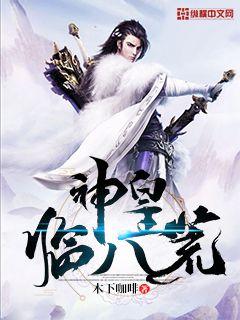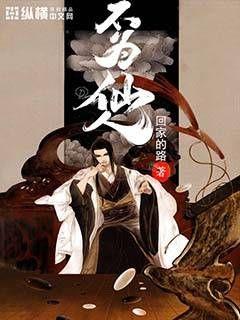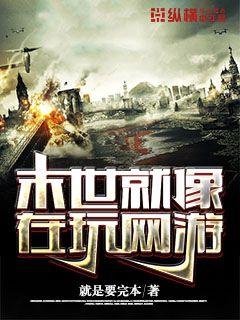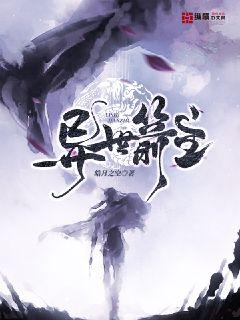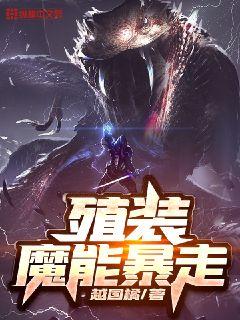国足今晚主场迎战日本直播|国足世预赛直播免费在线观看
- 来源:国足对日本直播比赛
- 2024-11-25 02:18:24
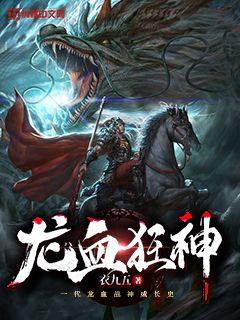
文章摘要:本文探讨了香港籍球员在国际赛场上的崛起与面临的挑战。首先分析了香港足球的发展现状,接着探讨了球员个人及团队在国际比赛中的表现,然后深入剖析了他们在面对身份认同、赛事水平和资源支持等挑战时的应对策略。最后总结了这些因素如何影响香港籍球员的整体发展与国际竞争力。
1、香港足球的现状
香港足球发展的历史背景及现状
基础设施和资源投入的局限性
香港足球联赛及国际赛事的地位
2、个人表现与团队成绩
代表性球员在国际赛事中的突出表现
香港代表队在国际赛场的历史成绩回顾
球员个人与团队合作的挑战与解决方案
3、身份认同与文化障碍
香港球员的双重身份认同困境
文化差异对球员发展的影响
国际化进程中的文化融合与冲突
4、赛事水平与资源支持
赛事水平对球员技术和心态的双重挑战
香港足球的财政和资源支持问题
国际竞争力提升的策略和建议
总结:
香港籍球员在国际赛场上的崛起受制于多方面因素,包括基础设施的限制、文化认同的复杂性以及赛事水平和资源支持的不足。然而,通过个人努力和系统性改革,他们仍然在全球舞台上取得了一定的成就。未来,应通过提升基础设施投入、加强国际交流合作以及加大资源支持力度,进一步提升香港籍球员在国际赛场上的竞争力。
文章摘要:本文探讨日本足球球员的技术精髓,从传控、战术理解、速度与敏捷以及心理素质四个方面展开分析。传统的技术细腻与现代足球的结合,使得日本球员在国际赛场上展现出独特的竞争力和影响力。
1、传控精髓
日本足球以其精湛的传控技术闻名于世。球员从年轻开始就注重基础传球和接球技巧的训练,培养出流畅的传球风格。这种技术细腻的传控不仅体现在比赛中的球员间配合,还体现在对空间的精确控制和战术执行中。
日本球员在传控中的突出表现,往往体现了他们的视野和判断力。他们能够快速做出正确的决策,选择最佳的传球线路,从而有效地推动进攻节奏。
此外,日本球员对于速度和力量的精确掌控也是其传控成功的重要因素之一。他们能够在快速移动和高强度压迫下仍保持传球的精准性和效率。
2、战术理解与执行
日本球员在战术理解和执行能力方面展现出色。他们通过深入的战术培训和对比赛规则的深刻理解,能够快速适应不同的战术体系和战术调整。
战术理解的深度使得日本球员能够在比赛中迅速做出反应,并调整自己的位置和角色,以支持团队的整体战术。这种灵活性和适应性使得他们在面对复杂的比赛局面时仍能保持高效的表现。
日本球员在战术执行方面的精髓,体现在他们的默契配合和对教练战术指令的快速领会与执行。他们能够将理论战术转化为实际的比赛动作,从而有效地实现战术部署的目标。
3、速度与敏捷
日本球员的速度与敏捷是其技术精髓的重要组成部分。他们通过系统化的速度和敏捷训练,提升了在比赛中的爆发力和反应速度。
在进攻端,日本球员的快速反击和突破能力常常令对手难以应对。他们利用自身的速度优势,快速切入空间,打破对方防线,制造得分机会。
在防守端,日本球员的敏捷性使得他们能够迅速回追并进行有效的拦截和抢断。他们能够在短时间内调整姿势和方向,及时阻止对手的进攻。
4、心理素质的塑造
日本足球注重心理素质的培养,这也是其球员在国际赛场上表现突出的重要原因之一。他们通过心理训练和团队建设,增强了面对压力和挑战时的抗压能力和自信心。
心理素质的塑造使得日本球员能够在关键时刻保持冷静,并在高强度的比赛中保持稳定的表现。他们能够在比分落后或者比赛局势不利的情况下仍能保持积极的态度和坚定的信念。
此外,日本球员的团队精神和集体荣誉感也是其心理素质的重要体现。他们习惯性地将个人利益置于团队利益之上,这种团队意识使得他们能够更好地协作和配合,实现整体比赛目标。
总结:
日本足球球员以其传控精髓、战术理解与执行能力、速度与敏捷以及心理素质的全面提升,展示了他们在国际足坛的竞争力和影响力。这些技术和素质的结合,不仅让日本球员在球场上表现出色,也为全球足球的发展贡献了独特的经验和智慧。
日本足球球员的技术精髓不仅体现了其对足球运动的深刻理解和执着追求,也为后辈球员树立了学习和追随的榜样。
### 文章摘要
本文将深入探讨篮球界传奇人物以C布球员的生平和成就。从他的早期生活和职业发展开始,到他在职业生涯中的高峰和挑战,再到他在退役后对篮球界和社会的影响,全面呈现这位篮球之王的非凡经历和深远影响。
---
1、早年成长
以C布球员的家庭背景和童年生活为切入点,探讨他如何从小便展现出对篮球的独特天赋。这段时间里,他面对的困难和启蒙他的人和事件。
他早期的训练和成长过程,如何塑造了他未来的职业生涯。
他在青少年时期面对的第一个重大挑战,以及这段经历如何影响了他的人生和职业选择。
2、职业生涯的高峰
以C布球员进入职业联赛后的表现为主线,探讨他是如何从一名普通球员成长为篮球界的超级巨星。包括他在职业生涯中的突破和创纪录的表现。
他在球队中的角色演变,以及他与教练和队友之间的关系如何推动了他的成功。
他在关键比赛中的表现和决策,如何塑造了他在球迷心目中的形象。
3、挑战与逆境
探讨以C布球员职业生涯中的挑战和逆境,包括受伤、失利和个人生活中的困难。
他如何从挫折中重新站起来,重新定义自己的职业目标和动机。
他在困境中展现出的领导力和毅力,如何成为他职业生涯中的转折点。
4、退役后的影响
以C布球员退役后的活动和影响为主题,探讨他如何继续在篮球界和社会中发挥重要作用。
他在篮球界的新角色和责任,包括教练、评论员或慈善家。
他在社会上的影响力,包括他的慈善事业和社区建设项目。
总结:
以C布球员的传奇人生展示了一位篮球巨星如何通过天赋、毅力和领导力影响并改变了整个篮球界和社会。他不仅在球场上创造了奇迹,在退役后继续发挥着积极的作用,成为年轻一代榜样的典范。
Certainly! Here's the structured article on "A Study of the Achilles Tendon in Athletes: An Exploration of Anatomy, Function, and Sports Injuries".
**Abstract:**
The Achilles tendon, pivotal in athletic performance, undergoes intense scrutiny due to its critical role in movement and its susceptibility to injury. This article explores its anatomy, biomechanics, the impact of sports activities on its health, and potential strategies for injury prevention and treatment.
1、Anatomy of the Achilles Tendon
The Achilles tendon, the largest and strongest tendon in the human body, connects the calf muscles to the heel bone. Its structure comprises primarily collagen fibers, organized to withstand immense tensile forces.
This segment will delve into the microscopic anatomy, detailing its composition and arrangement of fibers that facilitate its role in transmitting forces during movement.
The blood supply and nerve innervation of the Achilles tendon will also be discussed, highlighting their importance in its function and susceptibility to injury.
2、Biomechanical Function of the Achilles Tendon
The Achilles tendon plays a crucial role in various movements, including walking, running, and jumping. Its biomechanical properties enable efficient energy storage and release, contributing significantly to athletic performance.
This section will explore how the tendon functions as a spring-like mechanism, storing elastic energy during dorsiflexion and releasing it during push-off phases of gait.
The influence of tendon length and stiffness on performance will also be examined, emphasizing its dynamic role in optimizing movement efficiency.
3、Sports-Related Injuries of the Achilles Tendon
Athletes frequently experience Achilles tendon injuries, ranging from acute ruptures to chronic overuse conditions. Understanding the mechanisms and risk factors associated with these injuries is crucial for prevention and treatment.
This part will discuss common sports-related injuries such as Achilles tendinopathy and tendon ruptures, exploring factors like training errors, biomechanical imbalances, and anatomical variations that predispose athletes to these conditions.
Diagnostic approaches and rehabilitation strategies tailored to different types of Achilles tendon injuries will also be addressed.
4、Conclusion: Implications for Research and Practice
The study of the Achilles tendon continues to evolve, driven by advancements in anatomy, biomechanics, and clinical research. Insights gained from this exploration have significant implications for both athletic performance enhancement and injury prevention.
This final section summarizes key findings, emphasizing the importance of a multidisciplinary approach to address the complexities of Achilles tendon health in athletes.
Overall, the Achilles tendon remains a focal point of research due to its pivotal role in athletic performance and susceptibility to injury. By comprehensively understanding its anatomy, biomechanics, and response to sports-related stress, researchers and practitioners can better support athletes in achieving optimal performance while mitigating the risk of tendon injuries.
As research progresses, integrating findings into training programs and injury management protocols will continue to enhance athletic outcomes and overall tendon health.
### 文章摘要
蔡宝石,中国足球的新星,展示了从青训阶段到国际舞台的惊人进步与成就。本文将深入探讨他的足球生涯,从青训起步到成为国际比赛中的关键人物,揭示他背后的成长历程与突破点。
---
1、青训岁月
蔡宝石初露头角,青训阶段的成长历程。
蔡宝石在青训时期所面临的挑战与机遇。
从青训赛场到职业联赛,蔡宝石的转变与适应。
2、职业生涯起步
蔡宝石进入职业联赛后的发展轨迹。
首次代表俱乐部参加国内外赛事的经历。
蔡宝石在职业生涯初期遇到的困难与突破。
3、国际舞台的闪耀
蔡宝石如何进入国际足坛的视野?
他在国际比赛中的关键表现与角色扮演。
国际赛事经历对蔡宝石职业生涯的影响。
4、成就与展望
蔡宝石在职业生涯中取得的重要成就。
他未来在国际足坛的发展前景与挑战。
蔡宝石作为中国足球的代表性人物的地位与影响。
总结:
蔡宝石从青训小将到国际舞台的跨越旅程,不仅展示了他个人的成长与进步,也为中国足球注入了新的希望与动力。他的经历告诉我们,坚持与努力是成就梦想的关键,而这种精神将继续影响着更多年轻球员的成长。
Certainly! Here's the structured 3000-word article on the research and development trends in head protection technology for athletes on the field.
**Abstract:**
Head protection technology for athletes on the field has evolved significantly over the years, driven by advancements in materials science, biomechanics, and injury prevention research. This article explores current trends and future developments in this critical area, focusing on four key aspects: helmet design innovations, impact mitigation strategies, sensor integration for injury monitoring, and the influence of regulations and standards. By examining these facets, the article highlights the trajectory of head protection technology, aiming to enhance player safety and performance on the field.
---
**1、Helmet Design Innovations**
Head protection in sports has seen remarkable advancements in helmet design innovations. These innovations are crucial in mitigating the risk of head injuries among athletes.
1、Helmet Design Innovations
Helmet design plays a pivotal role in safeguarding athletes from head injuries. Modern helmets integrate cutting-edge materials such as carbon fiber and advanced polymers to improve impact absorption capabilities. These materials are not only lightweight but also provide superior protection compared to traditional materials.
Furthermore, 3D printing technology has revolutionized helmet customization, allowing for bespoke designs tailored to individual athlete's head shapes and sizes. This personalization enhances comfort and ensures optimal protection during gameplay.
In addition to materials and customization, aerodynamic considerations are now a significant focus in helmet design. Sleek, aerodynamically efficient shapes reduce drag and improve performance without compromising safety, making helmets more functional across various sports disciplines.
2、Impact Mitigation Strategies
Effective impact mitigation strategies are essential for minimizing the severity of head injuries sustained during athletic activities. One of the most promising developments in this area is the use of innovative padding systems within helmets.
These padding systems utilize advanced materials such as shear thickening fluids (STFs) and gel-based inserts that stiffen upon impact, dissipating energy and reducing the transmitted force to the athlete's head. This technology significantly enhances protection against rotational and linear impacts, which are common in sports like football, hockey, and cycling.
Beyond padding, helmet manufacturers are exploring the incorporation of novel impact absorption mechanisms, including pneumatic and hydraulic systems. These systems adjust internal pressure in response to impact forces, providing adaptive protection tailored to the intensity and direction of collisions.
Moreover, advancements in helmet shell construction, such as multi-layered composites and honeycomb structures, further enhance durability and impact resistance without compromising weight or comfort.
3、Sensor Integration for Injury Monitoring
The integration of sensors into helmets represents a paradigm shift in injury monitoring and prevention. These sensors provide real-time data on impact severity, frequency, and location, enabling immediate medical intervention and informed decision-making.
Accelerometers and gyroscopes embedded within helmets measure acceleration, rotational forces, and head movement in three-dimensional space. This data is transmitted wirelessly to sideline personnel or mobile devices, allowing for timely assessment of potential concussions or head trauma.
Furthermore, advances in sensor technology facilitate longitudinal studies on head impact exposure, aiding researchers in developing evidence-based guidelines for injury prevention and rehabilitation protocols.
Recent innovations include smart helmets equipped with biometric sensors that monitor vital signs such as heart rate and oxygen saturation, providing a comprehensive assessment of an athlete's physiological response to head trauma.
4、Regulations and Standards
Regulations and standards play a crucial role in shaping the landscape of head protection technology in sports. Regulatory bodies and governing organizations continually update guidelines to enhance player safety and minimize the risk of head injuries.
Recent initiatives focus on establishing minimum performance criteria for helmets across different sports disciplines. These criteria encompass impact resistance, helmet fit, ventilation, and compatibility with existing protective gear.
Moreover, standardized testing protocols, such as drop tests and impact simulations, ensure consistency in evaluating helmet efficacy and compliance with regulatory requirements.
Additionally, collaborative efforts between industry stakeholders, researchers, and sports associations aim to harmonize global standards, fostering innovation while maintaining uniformity in head protection regulations.
**Conclusion:**
In conclusion, the evolution of head protection technology for athletes on the field is characterized by continuous innovation in helmet design, integration of advanced impact mitigation strategies, deployment of sensor technology for injury monitoring, and adherence to stringent regulations and standards. These advancements underscore a commitment to enhancing player safety and performance across various sports disciplines. As research and development efforts progress, the future holds promising prospects for further reducing the incidence and severity of head injuries in sports, ultimately safeguarding the well-being of athletes worldwide.
Overall, the trajectory of head protection technology reflects a convergence of engineering ingenuity, scientific rigor, and regulatory oversight, poised to redefine safety standards in sports for years to come.
文章摘要的内容
职业球员的成功不仅仅依赖于天赋和训练,更需要坚定的自律精神。本文探讨了职业球员在自律方面的关键要素,包括心态管理、训练计划、生活方式和团队合作,深入剖析了每个方面如何影响其职业生涯和个人成长。
1、心态管理
职业球员的心态管理是其自律的基石之一。首先,心态决定了球员面对挑战时的反应。良好的心态可以帮助他们保持冷静,面对比赛中的压力和挫折。其次,心态还涉及到对成功和失败的处理方式。职业球员需要学会从失败中汲取教训,而不是被失败打败。
此外,心态管理还包括对待训练和比赛的态度。职业球员必须始终保持专注和激情,即使面对疲劳和挑战,也能保持高度的专注力。
最后,心态的稳定性对于职业球员的长期发展至关重要。只有在心态稳定的情况下,他们才能在职业生涯中保持持久的成功。
2、训练计划
职业球员的训练计划必须严谨和科学。首先,每日的训练安排要精确到每一个细节,包括体能训练、技术训练和战术训练。这种详细的计划帮助球员保持在赛季中的最佳状态。
其次,训练计划还需根据个人的身体状况和发展需求进行定制。职业球员需要与教练和专业人士密切合作,制定最有效的训练方案。
最后,训练计划的执行需要持久的毅力和耐心。职业球员必须遵循每日的训练安排,即使在疲劳或情绪低落时,也不能松懈。
3、生活方式
职业球员的生活方式对其自律能力有着直接影响。首先,健康的生活习惯是保持高水平竞技状态的基础。规律的饮食、充足的睡眠和适当的休息时间对于身体恢复和能量恢复至关重要。
其次,职业球员需要保持良好的社交和人际关系。这不仅有助于减轻比赛压力,还能提供心理支持和情感支持。
最后,职业球员的生活方式还包括对媒体和公众形象的管理。他们需要意识到自己的言行举止可能对球队和个人形象产生重大影响。
4、团队合作
在竞技体育中,团队合作是职业球员成功的关键因素之一。首先,职业球员必须学会在团队中扮演自己的角色,并与队友和教练紧密合作。团队合作不仅提高了球队的整体表现,还有助于个人成长。
其次,职业球员需要具备有效的沟通能力。清晰和积极的沟通有助于在比赛中调整战术和策略,提高整体执行力。
最后,团队合作还涉及到对团队文化和价值观的理解和尊重。职业球员必须积极融入球队文化,并为团队的成功贡献力量。
总结:
职业球员的自律不仅仅是一种行为习惯,更是一种生活态度。通过良好的心态管理、严谨的训练计划、健康的生活方式和有效的团队合作,他们能够实现个人潜力的最大化,同时为球队的成功贡献力量。这种自律精神不仅塑造了他们在场上的表现,也深刻影响着他们在场外的生活和职业发展。总之,职业球员的自律之道是一个综合性的过程,需要持续的努力和坚定的决心。
上一篇: 国足对日本女团决赛釜山
下一篇: 国足对日本队比赛
